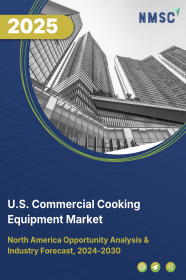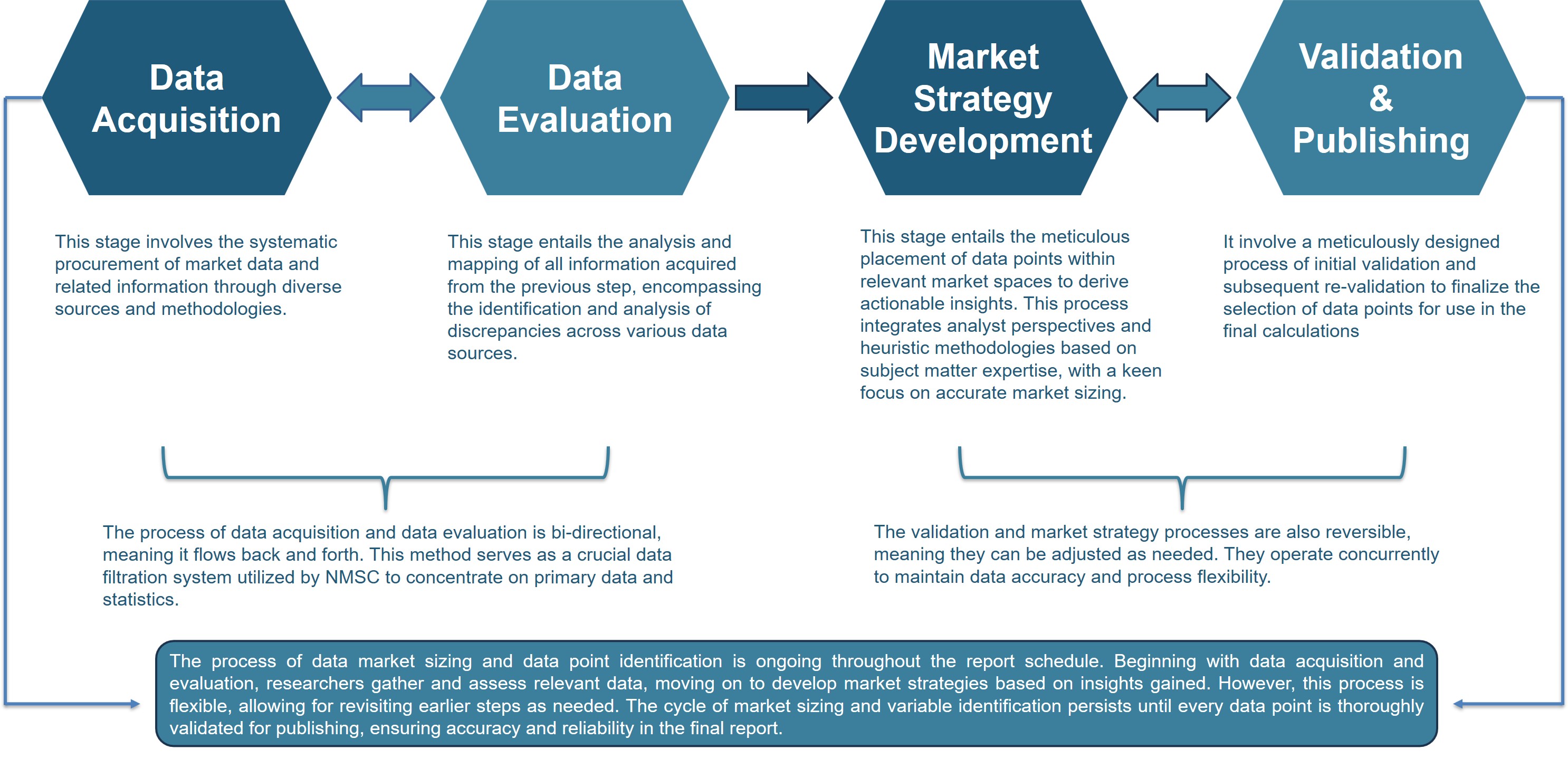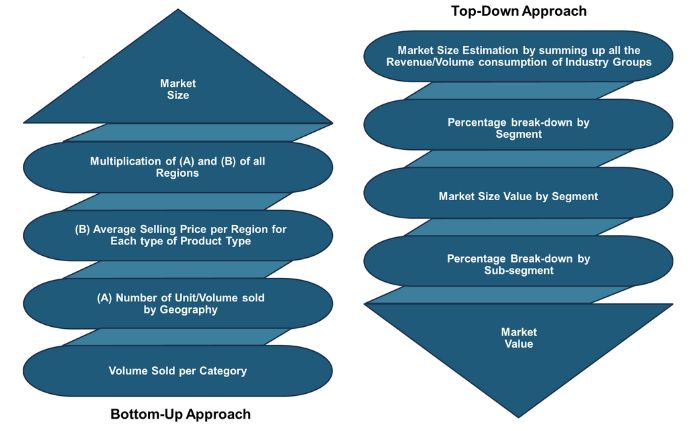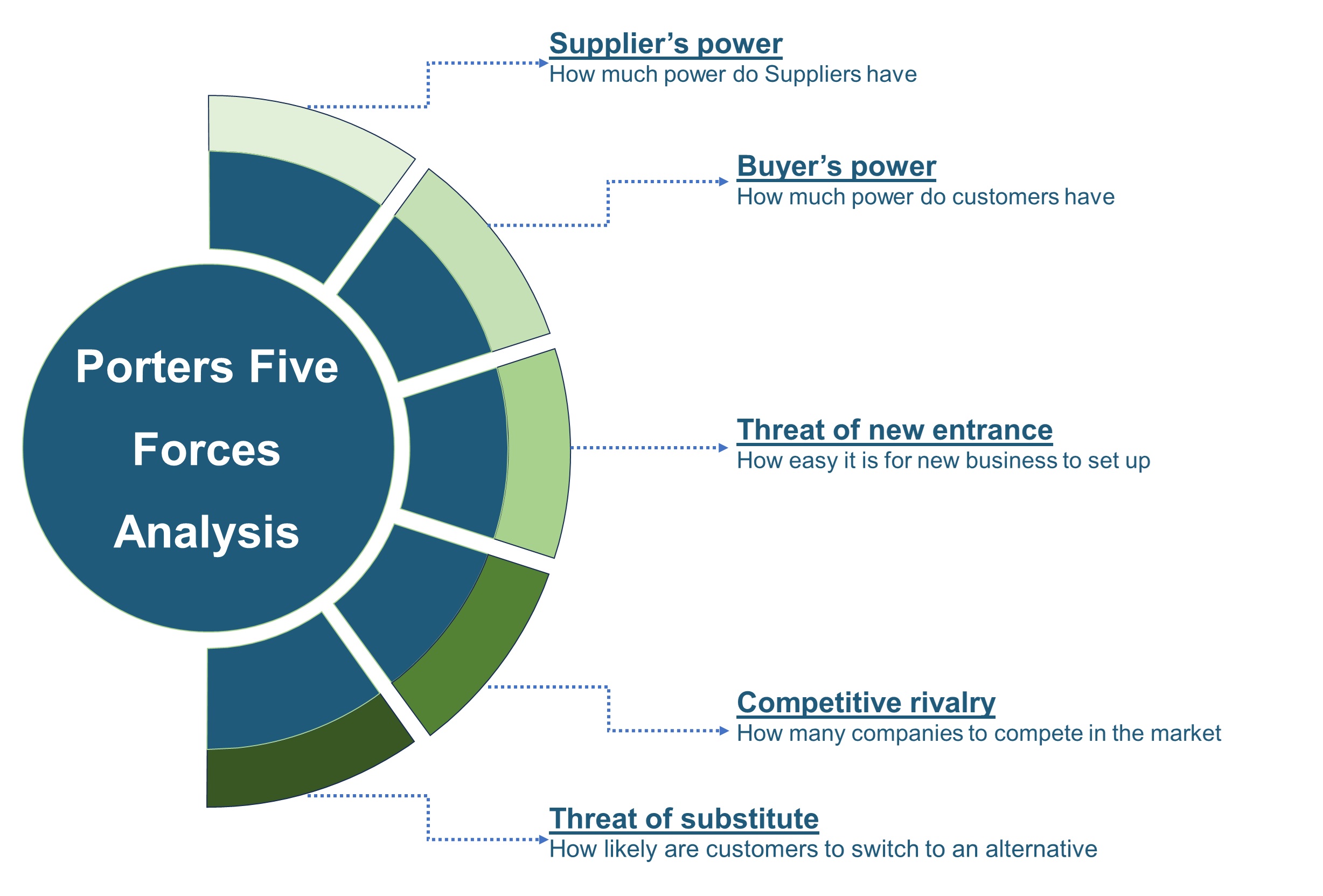
U.S. Commercial Cooking Equipment Market by Product Type (Broilers, Grills and Griddles, Cook Chill Systems, Refrigerators, Ovens, Dishwashers and Others), by Size (Small-Scale Equipment, Medium-Scale Equipment and Large-Scale Equipment), and by End-User (Full-Service Restaurants, Quick Service Restaurants, Catering, Railway Dining, Resorts & Hotel, Hospitals and Others)- Opportunity Analysis and Industry Forecast, 2024– 2030
Industry: Retail and Consumer | Publish Date: 27-Mar-2025 | No of Pages: 113 | No. of Tables: 80 | No. of Figures: 45 | Format: PDF | Report Code : RC2956
US Tariff Impact on U.S. Commercial Cooking Equipment Market
Trump Tariffs Are Reshaping Global Business
U.S. Commercial Cooking Equipment Market Overview
The U.S. Commercial Cooking Equipment Market size was valued at USD 4.91 billion in 2023, and is predicted to reach USD 6.48 billion by 2030, at a CAGR of 3.6% from 2024 to 2030. In terms of volume, the market size was 718 thousand units in 2023, and is projected to reach 1191 thousand units by 2030, with a from 2024 to 2030.
Commercial cooking equipment encompasses a variety of appliances and tools crafted for professional kitchens in restaurants, hotels, and catering businesses. Designed for efficiency and safety, this equipment is built with durable materials to endure continuous use, reducing downtime and ensuring a seamless kitchen workflow. Modern designs emphasize energy efficiency, helping businesses lower utility costs and environmental impact. Investing in top-tier hospitality cooking equipment is essential for maintaining smooth operations, enhancing competitiveness, and boosting profitability in the food service industry.
Fast Food Consumption Driving the Growth of the Commercial Cooking Equipment Market
The increasing consumption of fast food in the U.S. is a significant driver of growth in the commercial cooking equipment market. As fast-food chains and quick-service restaurants (QSRs) expand to cater to the fast-paced lifestyles of consumers, there is a rising demand for efficient and advanced cooking equipment. In terms of fast-food spending, the U.S. leads globally, with an average annual expenditure of approximately USD 1,200 per person, totaling around USD 110 billion nationwide. Among these chains, McDonald's stands out as a preferred choice for many consumers across the country. With the U.S. maintaining its position as a leader in fast food consumption, the hospitality cooking equipment market is set for sustained growth, driven by the continuous expansion and innovation within the fast-food sector. The U.S. commercial cooking equipment trends not only reflects national culinary preferences but also underscores the crucial role of efficient cooking solutions in meeting the evolving demands of a dynamic and expanding foodservice industry landscape.
Expansion in High-End Hotels Chains Drives the Commercial Equipment Market
The expansion of high-end hotels in response to increasing demand for premium hospitality experiences has significantly driven the need for sophisticated hospitality cooking appliances and tools. These establishments are investing heavily in advanced cooking equipment to meet the discerning culinary expectations of their guests, thereby fueling the expansion of the commercial cooking equipment market. B&B Hotels, Europe’s fastest-growing midscale hotel brand, made its U.S. debut in February 2024 with its first property in Orlando, Florida, marking a milestone in its expansion plans to revamp existing properties and build new hotels in Florida.
Concurrently, Wyndham Hotels & Resorts, the world's largest hotel franchising company, expanded its portfolio to 265 hotels across the U.S. and Canada by 2023, underscoring the rising demand for advanced cooking solutions and creating lucrative opportunities for equipment suppliers to cater to upscale establishments.
Stringent Regulatory Requirements and Compliance Standards Hinder the Market Growth
Stringent regulatory requirements, such as the International Food Standards (IFS) and the Food Safety Modernization Act (FSMA), pose significant challenges for businesses investing in new restaurant kitchen equipment. These regulations, enforced by governmental agencies and industry associations, mandate specific protocols for food handling, storage, and preparation to ensure safety and compliance. Non-compliance can lead to penalties and reputational damage.
Moreover, meeting emissions standards necessitates investments in ventilation and filtration systems, increasing complexity and costs. These regulatory burdens, combined with the financial strain of purchasing compliant equipment and ongoing maintenance, particularly impact small and medium-sized enterprises (SMEs). Ultimately, these challenges hinder the adoption of new cooking equipment, constraining the U.S. commercial cooking equipment market growth and expansion in the food service industry.
Integration Of Advanced Technologies in CCE Creates Future Market Prospects
The incorporation of advanced technologies such as smart cooking appliances, IoT-enabled kitchen equipment, and automation solutions is set to drive a significant increase in the U.S. commercial cooking equipment market demand for hospitality cooking equipment in the coming years. These innovations enable businesses to enhance efficiency, productivity, and sustainability within their operations.
Smart appliances, equipped with intelligent sensors and connectivity features, facilitate precise monitoring and control, optimizing cooking processes and elevating food quality. IoT-enabled equipment allows for real-time data monitoring and analysis, empowering kitchen staff to make informed decisions and adjustments to improve overall performance.
Meanwhile, automation solutions streamline repetitive tasks such as food preparation and cleaning, enabling staff to allocate more time to value-added activities. This integration not only
enhances operational efficiency but also reduces energy consumption and minimizes waste, meeting the growing preference for sustainable practices in the food service industry.
Competitive Landscape
The key players operating in the U.S. commercial cooking equipment industry include AB Electrolux, Duke Manufacturing Company, John Bean Technologies Corp, The Middleby Corporation, GEA Group Aktiengesellschaft, Hobart Corp., Hoshizaki America, Cambro, Frymaster LLC, Alto-Shaam, Inc., and others.
U.S. Commercial Cooking Equipment Market Key Segments
By Product Type
-
Broilers
-
Grills and Griddles
-
Cook Chill Systems
-
Refrigerators
-
Ovens
-
Dishwashers
-
Others
By Size
-
Small-Scale Equipment
-
Medium-Scale Equipment
-
Large-Scale Equipment
By End-User Industry
-
Full-Service Restaurants
-
Quick Service Restaurants
-
Catering
-
Railway Dining
-
Resorts & Hote
-
Hospitals
-
Others
Key Players
-
AB Electrolux
-
Duke Manufacturing Company
-
John Bean Technologies Corp
-
The Middleby Corporation
-
GEA Group Aktiengesellschaft
-
Hobart Corp.
-
Hoshizaki America
-
Cambro
-
Frymaster LLC
-
Alto-Shaam, Inc.
REPORT SCOPE AND SEGMENTATION:
|
Parameters |
Details |
|
Market Size in 2023 |
USD 4.91 Billion |
|
Revenue Forecast in 2030 |
USD 6.48 Billion |
|
Growth Rate |
CAGR of 3.6% from 2024 to 2030 |
|
Market Volume in 2023 |
718 thousand Units |
|
Market Forecast in 2030 |
1191 thousand Units |
|
Volume Growth Rate |
CAGR of 6.8% from 2024 to 2030 |
|
Analysis Period |
2023–2030 |
|
Base Year Considered |
2023 |
|
Forecast Period |
2024–2030 |
|
Market Size Estimation |
Billion (USD) |
|
Market Volume Estimation |
Thousand Units |
|
Growth Factors |
|
|
Companies Profiled |
10 |
|
Market Share |
Available for 10 companies |
|
Customization Scope |
|
|
Pricing and Purchase Options |
Avail customized purchase options to meet your exact research needs. |

















 Speak to Our Analyst
Speak to Our Analyst





















